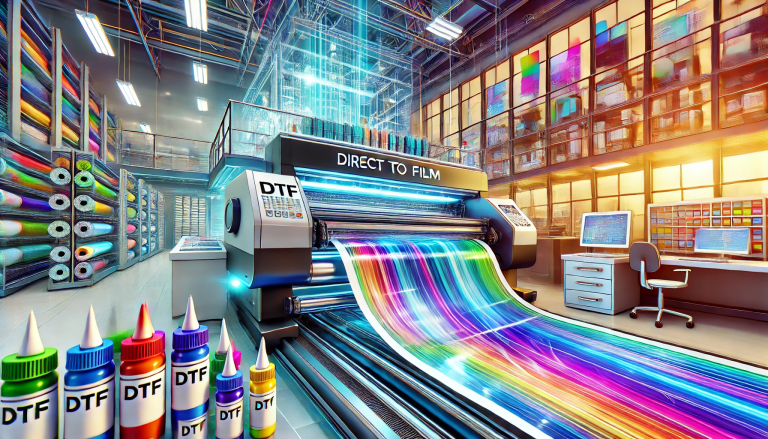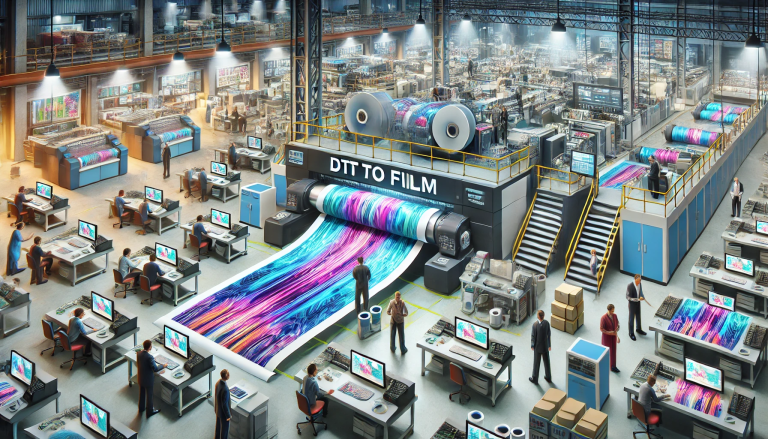“Can You Use Inkjet Ink on the DTF Transfer Sheets Large?” -MAXDTF- Heat Transfer Film Manufacturer, DTF transfer longevity Factory, Made in China
Part I: Introduction to DTF Printing and Inkjet Ink
The realm of digital printing offers a wide variety of techniques and materials to suit different needs and outcomes. Direct-to-Film (DTF) printing and inkjet printing are two such techniques, each with its specific requirements and characteristics. The question of whether inkjet ink can be used on large DTF transfer sheets entails an understanding of these printing methods and the role of ink in each.
DTF printing involves a digital process where a design is printed onto a special PET film using specialized DTF inks. These inks are formulated to adhere to the film and then transfer effectively to a variety of materials through heat pressing. Large DTF transfer sheets enable bigger designs or multiple smaller designs to be printed simultaneously.
Inkjet printing, meanwhile, utilizes a different type of ink, formulated for use in inkjet printers. These printers produce images by propelling droplets of ink onto paper or other materials. The composition and behavior of inkjet ink differ significantly from DTF ink, designed for a distinctly different printing process.
Part II: Compatibility of Inkjet Ink with DTF Transfer Sheets
Considering the distinct processes and ink formulations involved in DTF and inkjet printing, the compatibility of inkjet ink with DTF transfer sheets is not straightforward.
DTF inks are pigment-based, designed to fuse with an adhesive powder and to withstand the heat of a press without compromising the vibrancy or integrity of the design. These links are also engineered to maintain stability and vibrancy on the PET film before and during the heat transfer process.
In contrast, inkjet inks are typically dye-based (though pigment-based versions exist) and are not designed to withstand the heat transfer process. The inkjet ink, when applied to DTF transfer sheets, may not adhere properly to the film and could lead to sub-optimal results or damage to the heat press during transfer.
Inkjet printers cannot also print the adhesive powder layer that’s crucial in the DTF process, further complicating the attempt to use inkjet ink with DTF transfer sheets.
Part III: Practical Implications and Recommendations
Despite the theoretical possibility of using inkjet ink on DTF transfer sheets, in practical terms, it is not advisable due to the significant differences in ink composition and printing process requirements.
Using inkjet ink for DTF processes may result in a compromised end product, potentially leading to faded or inconsistent prints or even damage to the heat press or substrate. Moreover, inkjet printers cannot print the necessary adhesive powder layer, a critical component of the DTF process.
It is highly recommended to use the appropriate DTF inks and printers for DTF transfer sheets to ensure high-quality, vibrant, and durable prints. Moreover, adhering to the correct procedures and using the appropriate materials can increase the longevity and reliability of your printing equipment.
Summary
In conclusion, while inkjet ink theoretically could be applied to DTF transfer sheets, it is not suitable or recommended due to the differing requirements and properties of DTF and inkjet printing processes. DTF inks are specifically formulated to adhere to the transfer film and withstand the heat-pressing process, producing vibrant, durable prints. In contrast, inkjet inks may not adhere properly to the film or withstand the heat transfer process, potentially leading to inferior results or damage to printing equipment. Therefore, it is advisable to use the correct inks and equipment designed specifically for DTF printing to ensure optimal results and preserve the integrity of your printing operations.




